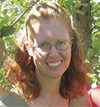Thirteen and a half years. I made it 13 and a half years without questioning the curriculum in our school district. Then my oldest son took an AP environmental science (APES) class this year as a senior.
This is a class he has enjoyed very much, and the teacher makes the topic engaging. For the most part, the topics covered I agree with, and then they had a unit called “meat production methods.”
One day my son came home from school and started talking about how he was frustrated with what they were learning in this unit, and they were watching the movie Food Inc. The students have study guides they complete using readings and watching videos made by other APES teachers from across the country. This is a national curriculum approved by the college board to prepare students to take the APES test offered in May every year to earn college credit. He showed me the study guide, and I was not happy. This study guide was very one-sided and opinionated toward the negative side of meat production.
I want to share with you some information on the study guide.
Cows release methane, a greenhouse gas, as part of their digestive process. True statement.
Animal waste needs somewhere to go – unfortunately, it often ends up in waterways. Yes, it does need somewhere to go, but it does not often end up in waterways. According to my son, in one of the videos, a teacher talked about manure from lagoons going to landfills. As far as I know, farmers don’t take manure to landfills.
Growth hormone is used to hasten the maturity of cattle – adds an outside chemical to the meat. Yes, growth hormones are used in meat production, but it is not an outside chemical. It’s estrogen, which is naturally in the meat to begin with – along with being in a number of other fruits and vegetables.
Organisms in a small space means that feeding and cleaning are easier. This is a statement that was made under the section talking about concentrated animal feeding operations (CAFOs). CAFOs follow strict guidelines to provide adequate living conditions.
Crowded. Again, this one-word sentence was under the section on CAFOs. Are there farmers that have their barns overcrowded? Yes, but this is not the norm in the industry.
Don’t need preventative antibiotics like you do with CAFOs. This statement was made in a section talking about free-range grazing. Antibiotics are not used to prevent diseases; they are used to treat diseases and only when animals really are sick and need them. One system doesn’t use more antibiotics than the other.
She doesn’t say this in the video, but ethically, free-range grazing provides much better treatment for animals. This is a very opinionated statement. One system does not provide better treatment for animals over another.
As a farmer, agricultural educator and parent, I knew I could not just sit by without saying something. The day after we had a family discussion over this study guide, I got an email from the school about upcoming parent-teacher conferences. This was the prime opportunity to talk to the teacher. On the night of the conference, we talked about my son and the class. Then I told her the real reason I wanted to talk to her – my disappointment in this study guide.
The next 10 minutes were filled with an educated discussion between two people. She agreed that some of the statements were option based. She also told me that she grew up in the city and was not aware of everything that goes into meat production. When we talked about the videos, she said she did think some of the items in them sounded a little off, but she didn’t know any different. I filled her in on the strict requirements CAFOs have to follow, that growth hormones contain far less estrogen than birth control pills, and shared my story of requirements we had to follow when building our manure pit.
We talked about how there are situations when animals do not have the best care, and those are the ones that make the news – not all the positive things about the industry. By the end of our conversation, she invited me to Zoom into her class to tell the other side of the story and encouraged me to reach out to the college board. She agreed that students should hear what is really going on.
Later that evening, I received an email from her stating that she removed the one-opinionated sentence, “Crowded,” for future years. Two days after our discussion, I talked to the class and explained what really goes on in the industry. More importantly, I am proud of my son for writing on his study guide that he disagreed with this information and spoke up in class.
I share this story because it’s important for us to know what is being taught in our schools. This is a national curriculum. In larger cities, there are not parents with agricultural backgrounds to take a stand and share the truth. I plan to contact the college board and express my disappointment with the curriculum. If you are not happy with the story being told in your child’s classroom about agriculture – get in there and tell the story yourself.





